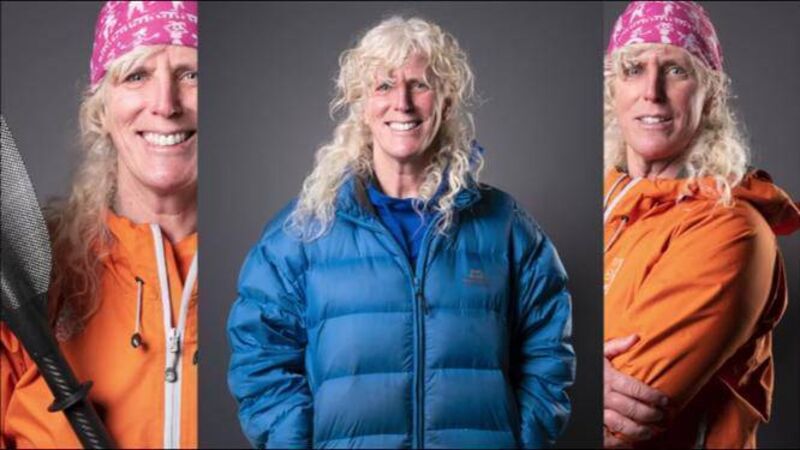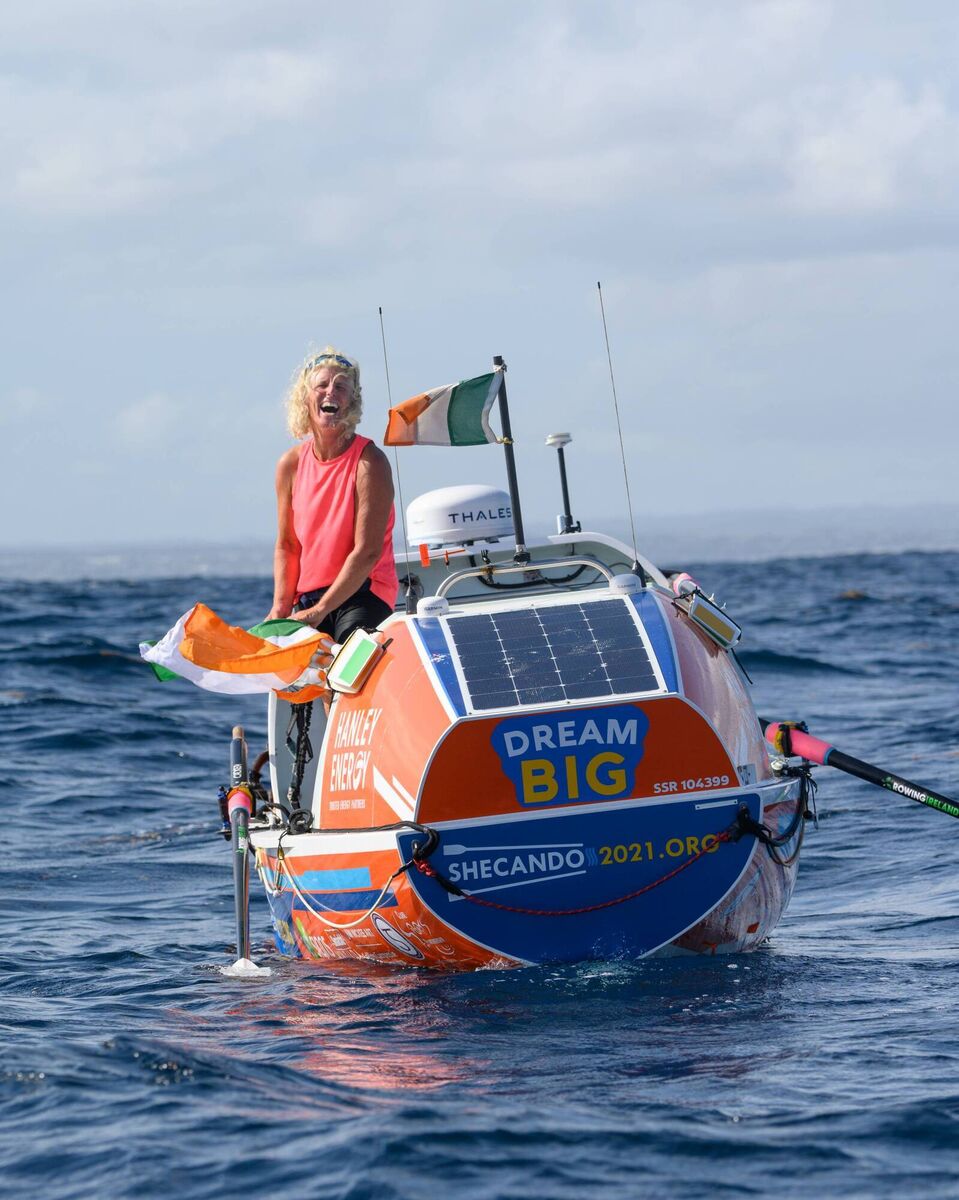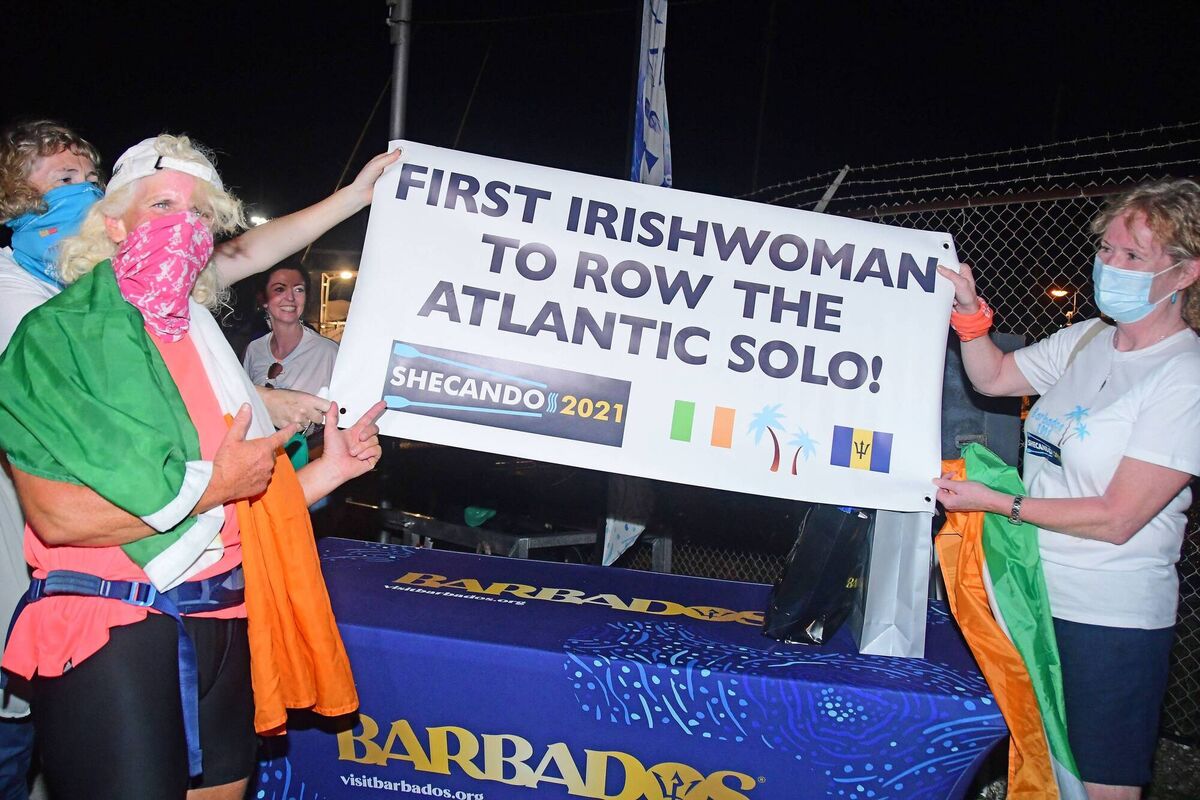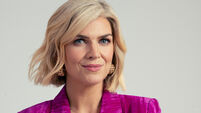Building layers of resilience: how Karen Weekes rowed the Atlantic solo

Karen Weekes
“There were two days when I had really, really big seas. There was the turquoise at the top of the wave and the white blowing off it... So your boat goes up the size of the wave, and then it goes down a bit, and sometimes you might surf it or whatever and they were so so steep.”
If Karen Weekes is describing a wave as “big”, you can be sure it had to be enormous.
Out on her own in a 25-foot boat in the Atlantic ocean, the 54-year-old sports psychologist survived on a maximum of four hours sleep a day as she rowed westwards for almost 3,000 nautical miles from the Canaries to the Caribbean.
When she landed in Barbados on the evening of February 24, after 81 days at sea, she was met by wild cheers from up to 30 close friends and family from Ireland.
So how did she prepare before setting out to become the first Irish woman to row the Atlantic solo?
Visualisation was one key technique that she had practised repeatedly over the past year during her extensive preparation for the extreme challenge.
While training on her rowing machine at home in Kinvara, Co Galway, she would surround herself with enlarged photos of big seas, and thunder and lightning – the latter being something she had admitted to find scary. She would put on Spotify for the thunderstorm sound effects. As a mental rehearsal, it was very effective, she said.
Speaking to me from Barbados the morning after her landing, she described how she also relied on prompts. “I had two pictures in the cockpit, and I had writing on those — just remembering who I was doing it for, and why I was doing it,” she says.
“It was just some cognitive coping stuff that would help me if I was under pressure... remembering the team and my family and the whole ‘Shecando’ ethos,” she explains, referring to the name of her campaign.
“And I was making history — breaking records is something I am not so interested in, but making history is something that you can be proud of. I was making history for Ireland, and I was making history for Weekes, my family name, and that meant a lot to me,” she says.
The mental challenge was something that had fascinated Weekes when she established her Shecando2021 campaign and bought the ocean rowing boat,, which she named after her mother, Millie.
Weekes, who lectures at Munster Technological University, had interviewed climbers on this theme while on the world’s second-highest mountain, K2, along with ultra-endurance athletes, for her PhD research.

She has èxtensive experience in endurance sports herself. She has cycled solo and unsupported 6,440km across Canada, through Alaska and the Yukon. Along with Orla Knight, a physical education teacher at Castletroy College in Co Limerick, she cycled across North America from San Francisco to Washington DC.
With Suzanne Kennedy, her project manager for this ocean row, she circumnavigated Ireland by kayak several decades ago. The two women set a record for the first such paddle around the island at the time. Weekes has also kayaked the length of the Croatian coast and around the Norwegian Lofoten Islands.
Her sailing experience is considerable, having crossed the Atlantic twice, sailed north from Mexico to California, and cruised waters off the east Australian coast.
Such vast experience builds layers of resilience and emphasises the importance of preparation and training for every physical scenario. Still, Weekes also needed a good communications system to “talk to the buddies back home”.
“I also asked several friends to write letters that I would read during the voyage — I was presented with two dry bags full before I left,” she says.
A music lover — she composes her own songs when at home — she also had a selection of recordings to listen to on her headphones.

Early steering problems, Atlantic storms and squalls, and being tailed by a hammerhead shark, which she accidentally whacked with one of her oars, were among the myriad challenges she encountered during her transit after she set out from Puerto de Mogan on December 6.
Her first squall hit when she was a couple of weeks out from the Canaries. “I was down below for three days, just coming up briefly to secure oars,” she says.
On her birthday, she completed one of the first of several swims under “Millie” to clear the hull of barnacles which might slow progress.
“Somebody asked me why I didn’t use antifouling [to keep the hull clear],” she says. “There were two reasons: the first for ocean conservation, as I didn’t want to be putting chemicals in the water, and the second, because the boat would be harder to sell with a lump of brown antifouling on the hull.”
At various stages during her voyage, she witnessed spectacular meteor showers, was kept company by dorade fish, and at one point, her deck provided a refugee for exhausted storm petrels.
It was, by far, the most testing of her adventures yet, she says.
Unlike other extreme challenges, a solo row allows no time for a break or a rest. “You are constantly on alert, no time to think of being alone,” she says.
Karen had calculated the east-west row would take 70 days, but it took 11 days longer as the anticipated trade winds did not materialise.
She is looking forward to“planting spuds” back at home and continuing work with the Shecando campaign.
It has two goals - to encourage more women into adventure sports and highlight UN sustainability goals – and she says she came up with “plenty of new ideas” during her ocean row.
She has pledged to divert all sponsorship money raised beyond the costs of the row to the RNLI and the LauraLynn children’s hospice.

Following her progress closely has been Irish international sea swimmer Nuala Moore, from Dingle, Co Kerry. Moore has been twice listed in the top 50 of the world’s most adventurous women in open-water swimming.
A formative experience for Moore in developing the “layers of resilience”, which Weekes refers to was participation in the first open-water swim around Ireland, completed as a relay during 2006.
“The feeling of being 20 miles off the west coast, in waters 300 metres deep - and some days swimming for hours just to say in the same position because of the rolling waves of the Atlantic – teaches patience,” Moore says.
Moore has been in far more challenging extreme environments since – swimming the Bering Strait in a relay from Russia to the US in 2013. That same year, she became one of only four women in the world to swim 1,000 metres in zero-degree ice water in Murmansk, inside the Arctic Circle.
She was also the first woman in the world to swim at latitude 55 degrees south of the Equator off Cape Horn in the Drake Passage in 2018.
The confused and turbulent waters are where the Pacific, the Atlantic, and the Antarctic oceans meet. Conditions were such that a safety RIB couldn’t accompany her during her swim. The command boat had to stand 100 metres off – meaning if her team on board lost sight of her in rogue waves, she was effectively “gone”.
“It was the first time a swimmer had ever swum Pacific to Atlantic south of Cape Horn with no land east or west, “she says, pointing out it was also one of the most dangerous swims in the world.
“That’s when you draw on your preparation and on your experience. I sang ‘The Brendan Voyage’, when looking up at Cape Horn,” she recalls.
“You have to trust your training, and break everything down – as in focusing on the next 15 minutes, rather than the entire swim. You focus, breathe, stay alive. Some people imagine stuff going wrong and build monsters in their heads, but if you have all your preparation done, you can only swim, the water that is in front of you.
“You train yourself to keep your emotions out, to become very clinical, and at the same time you will still allow yourself to enjoy those moments where you are so privileged to be in this beautiful place, and where you might see beautiful sunsets.
“That is the beauty of extreme challenges - you are exposed to your weaknesses. These extremes force us to be the best version of ourselves to succeed,”
At the same time, Moore has walked away from a swim if conditions were not right.
“There is a great courage in having the ability to say no, and to recognise that some days are not good days. As we say, never risk a bad swim.”


Celebrating 25 years of health and wellbeing










